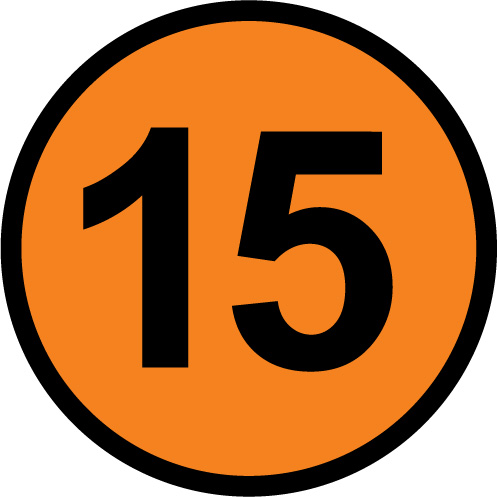Methods of surgical treatment of glioblastoma multiforme, its implications for survival and functional postoperative condition
DOI:
https://doi.org/10.53591/rug.v118i1.875Keywords:
Malignant glioma, Progression free survival, complete resection, FreedomAbstract
Glioblastoma multiforme is a type of malignant glioma comprising about 25 to 30% of primary brain tumors. Despite significant advances in our understanding of the basis of tumor pathogenesis, the median survival of these patients has increased only 3.3 months in the last 25 years. At diagnosis, the treatment is surgical resection as radical as possible followed by radiotherapy. Chemotherapy regimens have recently been added to the therapeutic arsenal, which has been made a small increase in survival. In this article we review various surgical treatment modalities and their implications in improving survival
in this group of patients.
References
Albert F., Forsting M., Sartor K., Adams H., Kunze S. (1994) Early postoperative magnetic resonance imaging after resection of malignant glioma: Objective evaluation of residual tumor and its influence on regrowth and prognosis. Neurosurgery 34: 45—61.
Barker C., Bishop A., Chang M., Beal K., Chan T. (2013) Valproic acid use during radiation therapy for glioblastoma associated with improved survival. Int J Radiat Oncol Biol Phys. Jul 1; 86(3):504-9.
Basso A., Carrizo G., Mezzadri J., Goland J., Socolovsky M. (2010) Gliomas de alto grado. Neurocirugía Aspectos clínicos y quirúrgicos. 1ª edición. Rosario, Ed. Corpus. Cap. 18 , 222 -228; 238 - 244.
Benavides M., Arráez M., Herruzo I. Acha T. (2012) Astrocitomas de alto grado. Tumores del SNC en el adulto y en la infancia. 2da edición. Madrid, Ed. Aula Médica. Cap. 7: 98-99; Cap. 8: 119 – 121.
Binello E., Green S., Germano I. (2012) Radiosurgery for high grade gliomas. Surgical Neurology Int; 3, Suppl S2: 1 18-26, New York.
Bloch O, Han S., Cha S. et al. (2012) Impact of extent of resection for recurrente glioblastoma on overall survival: clinical article. Neurosurg. Dec; 117(6): 1032 – 8.
Combs S., Widmer V., Thilmann C. (2005) Stereotactic Radiosurgery. Treatment Option for Recurrent Glioblastoma Multiforme. Cancer 2005;104: 2168–73, Heidelberg.
Crowley R., Pouratian N., Sheehan J. (2006) Gamma knife surgery for glioblastoma multiforme Neurosurg Focus Apr 15; 20 (4): E17.
Chaichana K., Chaichana K., Olivi A. (2011) Surgical outcomes for older patients with glioblastoma multiforme: preoperative factors associated with decreased survival. J Neurosurg 114:587–594, Baltimore.
Chaichana K., Aditya N., Parker S. (2011) Factors involved in maintaining prolonged functional independence following supratentorial glioblastoma resection. Clinical article. J Neurosurg 114: 604 – 612, Baltimore.
Chaichana K. et al. (2013) Multiple resections for patients with glioblastoma: prolonging Survival. J Neurosurg. April; 118(4): 812–820, Maryland.
David W. et al. (2012) Glioblastoma Multiforme Treatment with Clinical Trials for Surgical Resection (Aminolevulinic Acid). Neurosurg Clin N Am. July ; 23(3): 371–377.
Dea N, Fournier-Gosselin MP, Mathieu D, Goffaux P, Fortin D. (2012) Does extent of resection impact survival in patients bearing glioblastoma?. Can J Neurol Sci. Sep; 39(5):632-7.
Díez R., Slof J., Galván J. (2013) Estudio observacional retrospectivo sobre la efectividad del ácido 5-aminolevulínico en la cirugía de los gliomas malignos en España (Estudio VISIONA) Neurología – 506, Pamplona.
Fine H., Dear K., Loeffler J., Black P., Canellos G. (1993) Meta-analysis of radiation therapy with and without adjuvant chemotherapy for malignant gliomas in adults. Cancer Apr 15;71(8):2585-97.
Guenther C., Feigl C., Rainer R. et al. (2010) Resection of malignant brain tumors in eloquent cortical areas: a new multimodal approach combining 5-aminolevulinic acid and intraoperative monitoring. J Neurosurg 113: 352 – 357, Bremen.
Guthrie G., Eljamel S. (2013) Impact of particular antiepileptic drugs on the survival of patients with glioblastoma multiform e. Journal of Neurosurgery Apr Vol. 118 No. 4, Pag. 859-865. 6
Greenberg M. (2010) Malignant astrocytomas. Handbook of neurosurgery. 6th edition. N. York, Ed. Thieme. Cap. 21, pág. 600 – 612.
Keles G., Lamborn K, Chang S. et al. (2004) Volume of residual disease as a predictor of outcome in adult patients with recurrent supratentorial glioblastoma multiforme who are undergoing chemotherapy. J. Neurosurg. Jan; 100 (1): 41 -6.
Komotar R., Starke R., Sander C. (2010) Evaluating the benefit of repeat surgery for recurrent glioblastoma multiforme N16, Vol. 67, Number 6, December.
Lehecka M., Laakso A., Hernesniemi J. (2011) Gliomas. Helsinki Microneurosurgery Basics and Tricks. 1ª edición. Finland, Helsinki University Central Hospital. Cap. 6.5 pág. 228–230.
Masciopinto J, Levin A., Mehta M., Rhode B. (1995) Stereotactic radiosurgery for glioblastoma: a final report of 31 patients. J. Neurosurgery Apr; 82(4): 530 – 5.
Nader S., Mei-Yin P., McDermott M. (2011) An extent of resection threshold for newly diagnosed glioblastomas Clinical article. J Neurosurg Vol 115: 3–8, California
Oszvald A., Güresir E., Setzer M., Vatter H. (2012) Glioblastoma therapy in the elderly and the importance of the extent of resection regardless of age Clinical article. J Neurosurg 116:357–364, Frankfurt.
Published
How to Cite
Issue
Section
License

This work is licensed under a Creative Commons Attribution-NonCommercial-NoDerivatives 4.0 International License.

This work is licensed under a Creative Commons Attribution-NonCommercial-NoDerivatives 4.0. International License.
You are free to:
- Share — copy and redistribute the material in any medium or format
- The licensor cannot revoke these freedoms as long as you follow the license terms.
Under the following terms:
- Attribution — You must give appropriate credit , provide a link to the license, and indicate if changes were made . You may do so in any reasonable manner, but not in any way that suggests the licensor endorses you or your use.
- NonCommercial — You may not use the material for commercial purposes .
- NoDerivatives — If you remix, transform, or build upon the material, you may not distribute the modified material.
- No additional restrictions — You may not apply legal terms or technological measures that legally restrict others from doing anything the license permits.































